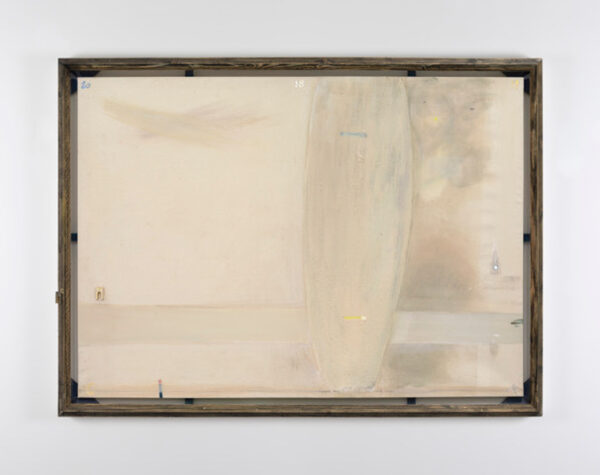Seen at the Dallas Art Fair at Kerlin Gallery, Dublin
Choosing one artwork to discuss from the recent Dallas Art Fair is challenging. Inundated by a variety of pieces, the act of walking any art fair is to be a “coolhunter,” like the character Cayce Pollard in author William Gibson’s novel Pattern Recognition. We stroll the corridors looking and absorbing everything, waiting to be struck by the charisma of an artwork that implores us to look closer. In many cases, what’s brought to art fairs are artworks that are ostentatious, attention seeking, and forgettable. At worst, galleries bring to Texas fairs imagery that is ironically cowboy; it’s like bringing art about the Statue of Liberty to New York fairs. I cringe and move on. Thankfully, in this rendition of the Dallas Art Fair there were plenty of pieces worthy of discussion. One in particular exuded a quiet and determined presence, as a noticeable counterpoint to the “lure the audience at all costs” works seen in some booths.
The mostly pale, mid-sized painting by Merlin James entitled Day (2018-2019) whispered and called like a siren. Displayed prominently in the booth for Dublin’s Kerlin Gallery, the painting has many of James’ familiar mercurial leanings, yet unusually for his practice, it is 57 x 77 inches. While it is certainly a subtle artwork, its impression is undeniable. The canvas proper hovers horizontally within a blackish frame that shows its cross braces as part of the overall gestalt of the artwork. The canvas itself is a scrubby and muted wash of tannish colors describing a landscape seen from James’ studio window.
The artist casually but purposefully depicts a large ovoid tree, the run of a river, and short notations of Scottish architecture. The faded coloration depicts the weather as a felt presence or mist. Like Mondrian, James seems to cautiously arrange the touches of his brushwork as if he was tuning an old piano. He attaches to the surface of the canvas and frame small wooden arches to indicate a bridge; these appear like miniature pieces set upon a mysterious board game.
Running along the top are the numbers 18, 19, and 20, scrawled in differently colored paint. These are the dates the artwork was made — another diaristic hint to the artists’ aims. Essentially James is rethinking the view from his window, like how Cezanne revisited Mont Sainte-Victoire. But in James’ case, the intent is about the idea of painting as an object as much as it is about documenting the sensation of the land and weather.
The artist always appears to be wondering what representation is, and what possible language he can employ to holistically speak about place, feeling, and the idea of painting. For me, this daring and beautiful artwork stole the show at the Dallas Art Fair. It is quiet and almost reserved — yet it is adamantly determined to ask us to look and think deeply.



